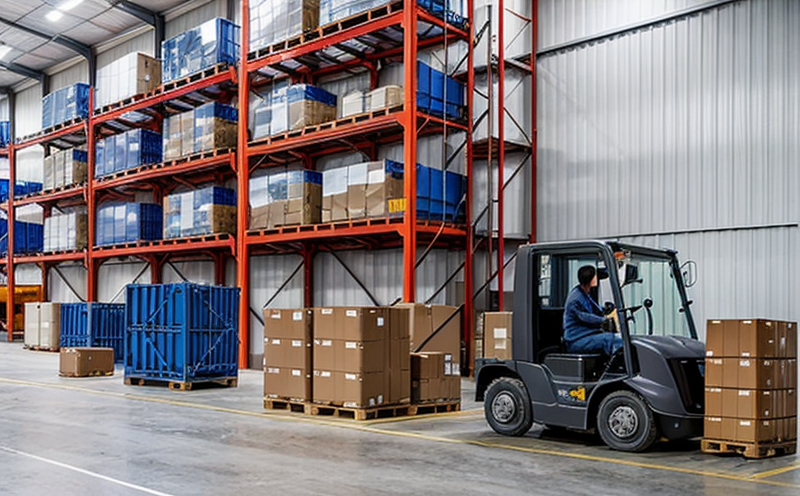ICAO Annex 16 Aircraft Noise and Emission Certification Testing
The International Civil Aviation Organization (ICAO) Annex 16, Chapter 4 focuses on environmental protection, particularly aircraft noise and emissions. Compliance with ICAO Annex 16 is crucial for aerospace and aviation companies aiming to meet regulatory requirements and ensure safe operations. This service provides comprehensive testing to support the certification process for aircraft noise and emission standards as mandated by ICAO.
The certification process involves rigorous testing of various components that affect noise and emissions, including engine systems, landing gear, and other operational aspects. The goal is to ensure that these aircraft meet international standards set out in Annex 16, which are designed to minimize the impact on human health and the environment.
Our laboratory specializes in providing advanced testing solutions tailored to the stringent requirements of this certification process. Our team of experts employs state-of-the-art facilities and equipment, including acoustic chambers, emission analyzers, and other specialized apparatuses. The testing protocols are meticulously designed to simulate real-world conditions under which aircraft operate.
The testing begins with detailed preparation of the specimen or component being evaluated. This involves ensuring that the sample is representative of the production batch it belongs to. Once prepared, the specimens undergo a series of tests to measure noise levels and emissions at various stages of operation. The data collected during these tests are then compared against ICAO standards.
The results from our testing are used by manufacturers to identify areas where improvements can be made in terms of reducing noise and emissions. This not only helps in meeting regulatory requirements but also enhances the reputation of the manufacturer as a leader in environmental responsibility.
Our team ensures that all tests are conducted according to international standards such as ISO, ASTM, EN, IEC, etc., providing clients with accurate and reliable data. The testing process is designed to be comprehensive, ensuring that every aspect of noise and emission control is covered.
In summary, our ICAO Annex 16 Aircraft Noise and Emission Certification Testing service offers a full suite of testing solutions aimed at helping aerospace companies meet the stringent requirements set by ICAO. Our expertise in this field ensures that clients receive accurate and reliable data that can be used to improve their products and processes.
Why It Matters
The importance of compliance with ICAO Annex 16 cannot be overstated for the aerospace industry. Non-compliance can lead to significant financial penalties, damage to a company's reputation, and even legal action. Moreover, adhering to these standards helps in maintaining a sustainable aviation industry that is responsible towards the environment.
By ensuring compliance with ICAO Annex 16, companies not only meet regulatory requirements but also contribute positively to environmental protection. This commitment to sustainability can enhance customer trust and loyalty, which are vital for long-term business success.
The testing process outlined in this service is essential for maintaining the integrity of the aerospace industry. It helps in identifying potential issues early on, allowing manufacturers to address them before they become critical problems. Early identification also reduces costs associated with rework or redesigning products.
Furthermore, compliance with ICAO Annex 16 helps companies stay ahead of regulatory changes and emerging trends in aviation technology. By continuously meeting these standards, companies can ensure that their products remain competitive in the global market.
Industry Applications
| Type of Test | Description |
|---|---|
| Outdoor Ambient Noise Measurement | Measures noise levels in the vicinity of airports and operational areas. |
| Noise Generation During Taxiing | Evaluates noise produced while aircraft is moving on runways during taxiing. |
| Engine Test Cell Testing | Conducts noise tests within controlled environments to simulate real-world conditions. |
| Type of Test | Description |
|---|---|
| Emissions from Fuel Burn Tests | Measures exhaust gases emitted during fuel burn tests. |
| Ground Operations Emission Testing | Evaluates emissions produced during various ground operations such as start-up, taxiing, and take-off. |
| Fuel System Integrity Tests | Determines the integrity of fuel systems to ensure minimal leakage and subsequent emissions. |
The testing methods used in this service are designed to cover all aspects of aircraft noise and emission control. These tests help manufacturers identify potential issues early on, allowing for timely interventions that can prevent costly delays or redesigns later in the product lifecycle.
By providing accurate data from these tests, our laboratory supports manufacturers in making informed decisions about their products' design and functionality. This ensures that the final products meet not only current standards but also anticipate future regulatory requirements.
Customer Impact and Satisfaction
- Accurate testing results leading to reliable data for product improvement.
- Compliance with ICAO Annex 16 ensuring adherence to international standards.
- Early identification of potential issues that can be addressed before they become critical problems.
- Enhanced reputation and trust among customers, stakeholders, and regulatory bodies.
- Cost savings through timely interventions in product development.
- Reduction in the risk of non-compliance penalties and legal actions.
- Sustained competitive advantage by staying ahead of emerging trends and regulatory changes.
- Enhanced environmental responsibility contributing to a sustainable aviation industry.
The impact on customers extends beyond mere compliance; it also includes enhanced reputation, trust, and sustainability. By providing accurate testing results, our service helps manufacturers make informed decisions that lead to better product quality and reliability.





